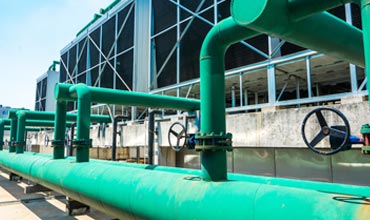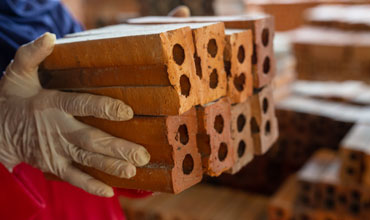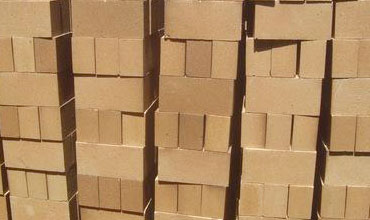Silica is the name given to a group of minerals composed of silicon and oxygen, the two most abundant elements in the earth’s crust. Silica is found commonly in the crystalline state and rarely in an amorphous state. It is composed of one atom of silicon and two atoms of oxygen resulting in the chemical formula SiO2.
Silica Sand
ABOUT SILICA SAND

WHAT IS INDUSTRIAL SAND (SILICA SAND)
Industrial sand is a term normally applied to high purity silica sand products with closely controlled sizing. It is a more precise product than common concrete and asphalt gravels. Silica is the name given to a group of minerals composed solely of silicon and oxygen, the two most abundant elements in the earth’s crust. In spite of its simple chemical formula, SiO2, silica exists in many different shapes and crystalline structures. Found most commonly in the crystalline state, it also occurs in an amorphous form resulting from weathering or plankton fossilization.
For industrial and manufacturing applications, deposits of silica yielding products of at least 95% SiO2 are preferred. Silica is hard, chemically inert and has a high melting point, attributable to the strength of the bonds between the atoms. These are prized qualities in applications like foundries and filtration systems. Quartz may be transparent to translucent and has a vitreous lustre, hence its use in glassmaking and ceramics. Industrial sand’s strength, silicon dioxide contribution and non-reactive properties make it an indispensable ingredient in the production of thousands of everyday products.
INDUSTRIAL SAND APPLICATIONS

CHEMICAL PRODUCTION
Silicon-based chemicals are the foundation of thousands of everyday applications ranging from food processing to soap and dye production. In this case, SiO2 is reduced to silicon metal by coke in an arc furnace, to produce the Si precursor of other chemical processes. Industrial sand is the main component in chemicals such as sodium silicate, silicon tetrachloride, and silicon gels. These chemicals are used in products like household and industrial cleaners, to manufacture fiber optics and to remove impurities from cooking oil.

BUILDING PRODUCTS
Industrial sand is the primary structural component in a wide variety of building and construction products. Whole grain silica is put to use in flooring compounds, mortars, specialty cement, stucco, roofing shingles, skid-resistant surfaces, and asphalt mixtures to provide packing density and flexural strength without adversely affecting the chemical properties of the binding system. Ground silica performs as a functional extender to add durability and anti-corrosion and weathering properties in epoxy-based compounds, sealants and caulks.

PAINT AND COATINGS
Paint formulators select micron-sized industrial sands to improve the appearance and durability of architectural and industrial paint and coatings. High purity silica contributes to critical performance properties such as brightness and reflectance, color consistency, and oil absorption. In architectural paints, silica fillers improve tint retention, durability, and resistance to dirt, mildew, cracking and weathering. In marine and maintenance coatings, the durability of silica imparts excellent abrasion and corrosion resistance.

GLASSMAKING
Silica sand is the primary component of all types of standard and specialty glass. It provides the essential SiO2 component of glass formulation and its chemical purity is the primary determinant of color, clarity, and strength. Industrial sand is used to produce flat glass for building and automotive use, container glass for foods and beverages, and tableware. In its pulverized form, ground silica is required for the production of fiberglass insulation and reinforcing glass fibers. Specialty glass applications include test tubes and other scientific tools, incandescent and fluorescent lamps, television and computer CRT monitors.

CERAMICS & REFRACTORIES
Ground silica is an essential component of the glaze and body formulations of all types of ceramic products, including tableware, sanitary ware and floor, and wall tile. In the ceramic body, silica is the skeletal structure upon which clays and flux components attach. The SiO2 contribution is used to modify thermal expansion, regulate drying and shrinkage, and improve structural integrity and appearance. Silica products are also used as the primary aggregate in both shape and monolithic type refractories to provide high-temperature resistance to acidic attack in industrial furnaces.

METAL CASTING
Industrial sand is an essential part of the ferrous and non-ferrous foundry industry. Metal parts ranging from engine blocks to sink faucets are cast in a sand and clay mold to produce the external shape, and resin bonded core that creates the desired internal shape. Silica’s high fusion point (1760°C) and a low rate of thermal expansion produce stable cores and molds compatible with all pouring temperatures and alloy systems. Its chemical purity also helps prevent interaction with catalysts or curing rate of chemical binders. Following the casting process, core sand can be thermally or mechanically recycled to produce new cores or moulds.

METALLURGICAL
Industrial sand plays a critical role in the production of a wide variety of ferrous and non-ferrous metals. In metal production, silica sand operates as a flux to lower the melting point and viscosity of the slag to make them more reactive and efficient. Lump silica is used either alone or in conjunction with lime to achieve the desired base/acid ratio required for purification. These base metals can be further refined and modified with other ingredients to achieve specific properties such as high strength, corrosion resistance or electrical conductivity. Ferroalloys are essential to specialty steel production, and industrial sand is used by the steel and foundry industries for de-oxidation and grain refinement.

FILTRATION AND WATER PRODUCTION
Industrial sand is used in the filtration of drinking water, the processing of wastewater and the production of water from wells. Uniform grain shapes and grain size distributions produce efficient filtration bed operation in the removal of contaminants in both potable water and wastewater. Chemically inert, silica will not degrade or react when it comes in contact with acids, contaminants, volatile organics or solvents. Silica gravel is used as packing material in deep-water wells to increase yield from the aquifer by expanding the permeable zone around the good screen and preventing the infiltration of fine particles from the formation.

OIL AND GAS RECOVERY
Known commonly as proppant, or “frac sand,” industrial sand is pumped down holes in deep good applications to prop open rock fissures and increase the flow rate of natural gas or oil. In this specialized application round, whole grain deposits are used to maximize permeability and prevent formation cuttings from entering the wellbore. Silica’s hardness and its overall structural integrity combine to deliver the required crush resistance of the high pressures present in wells up to 2,450 meters deep. Its chemical purity is required to resist chemical attack in corrosive environments.

